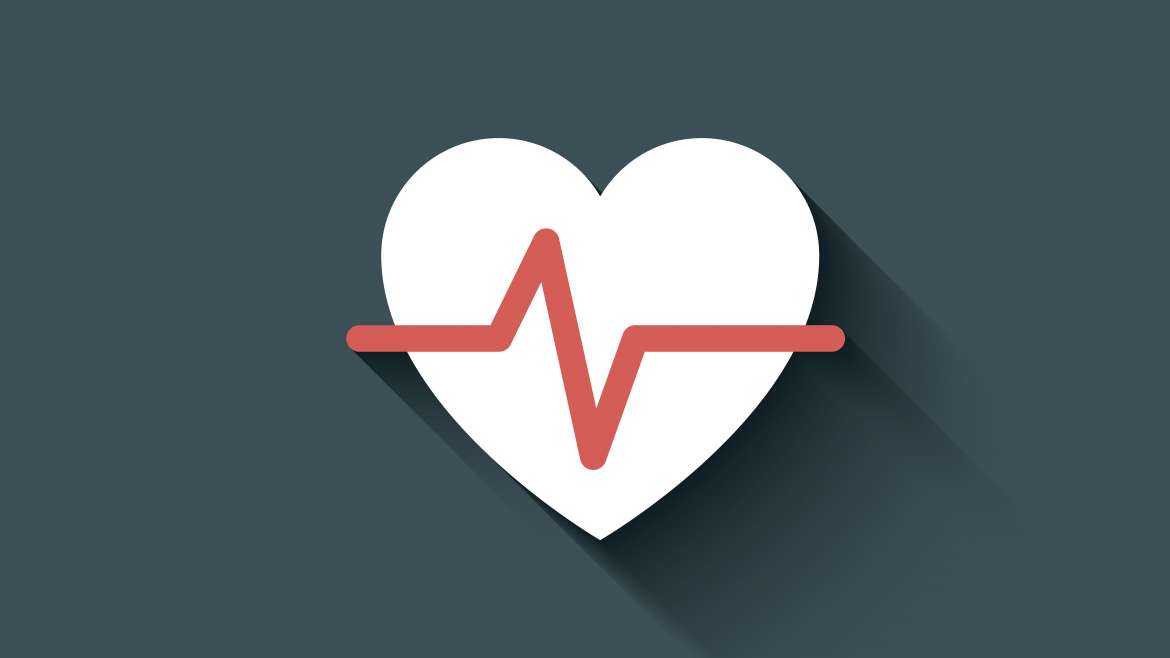The human heart is an incredible muscle. It’s about the size of your palm and can be considered our body’s engine, responsible for pumping blood into all body parts. Like any engine, the heart has to be upkept and maintained.
Besides the healthy heart foods I already talked about in a different post, the best maintenance plan also includes the right type of exercise along with limiting risk factors such as obesity.
In general, aerobic exercise is best to train your heart and keep it healthy. Aerobic means “with oxygen“ and refers to any activity that increases your oxygen intake, meaning you have to breathe faster or harder and therefore your will heart beat faster.
Before we get into the details of aerobic exercise, let’s first talk a bit more about the heart so you understand how it works. Basically, the heart is a pump made out of muscle, which forces blood to the lungs where it can take in oxygen. From there the blood will be pumped out to the rest of your body.
Your heart does this 24 hours a day, 7 days a week, and without it you would almost instantly die. It seems crazy but this little muscle beats about 100,000 times per day, pumping 2,000 gallons per day.
This process usually works very well, but problems can arise when the heart gets weaker, meaning it pumps less blood through the arteries. This can be the results of the hearts chambers or blood vessels clogging up or breaking down, the result of which is cardiovascular disease, which in the worst case can be lethal.
One of the greatest risk factors for cardiovascular disease is inactivity. Studies show that people who are inactive have an up to 50 percent higher risk of developing cardiovascular disease than people who are active or are at least moderately active.
That means sitting around all day isn’t so safe after all. It is estimated that one in four adults in the U.S. is completely sedentary, meaning they don’t exercise at all. The problem is that our heart, being a muscle, needs to be exercised to be kept strong and in shape.
Now some people who work in construction for example, already exercise quite a bit during their work hours. But people working office jobs are not active enough and should definitely make time to exercise during their time off. The fully sedentary lifestyle is even more dangerous when it’s combined with poor nutrition, which further increases your risk or heart disease.
That said, how should you exercise to minimize these risks and improve your health? It’s actually pretty easy and takes only about an hour of your time each day, a few days a week? Basically, what you want to accomplish is increasing your heart rate for a sustained amount of time. Three to four times a week is already enough.
You will see that like any muscle, the heart will become stronger and larger and will be able to pump more blood through the body with every beat. People who regularly exercise also have a slower resting heart rate because less effort is needed to pump blood.
How regular exercise can benefit your heart
It regulates blood pressure
Regular exercise will keep your arteries elastic, which promotes healthy blood flow and normal blood pressure. This is especially important for older people where the aging process will eventually take a toll on their arteries.
While many people with high blood pressure or hypertension opt for meds, moderate exercise in the form of light jogging every day can be just as effective as was shown in several studies.
It increases oxygen consumption
Put simply, exercise raises the number of red blood cells in your body. This helps transport oxygen faster and more efficiently. Therefore, it’s no surprise that people who exercise often have the lowest risk for heart disease.
What’s interesting though, is that studies have found that light to moderate exercise also helps people with existing heart disease. In that case, you want to make sure though, that your activities are monitored by your doctor.
Exercise also assists weight loss
We know from scientific research that exercise and weight loss are not a hit or miss game. That means that if you are overweight and sedentary you will see benefits even if you start out doing very little exercise and only lose a bit of weight.
Basically, any progress is better than none and you don’t have to go all out at first, which would also risk burning you out.
Exercise lowers the risk for type 2 diabetes
Physical activity improves insulin sensitivity, which means your body have lower blood sugar levels and a lower risk of diabetes. In fact, exercising 2,5 hours a week led to a reduction in diabetes risk by 58 percent in one study.
The right workout for a stronger heart
Now that we talked about all the benefits of regular exercise, let’s get to the workout. What should an effective aerobic workout look like?
First the good news. Any activity that increases your heart rate and which involves a near-continuous motion can be used. This includes not only the traditional running or jogging but also swimming, rowing, biking and even tennis. Even more exotic sports like kickboxing or dancing can provide aerobic benefits when done at the right intensity.
So the first thing you want to do is warm up. Warm-ups are important because they help your body make the transition from rest to activity and prevent soreness or injury. Starting a workout without warming up can lead to all kinds of problem like muscle strains or cramps.
A good warm-up includes dynamic movements and no static stretching (this is done after your workout). A few warm-up options are to do some jumping jacks, jump rope, or go for a light jog or even just a short walk.
Note: If you want the ideal full body warm up, check out my stretching course where everything is explained in more detail.
Once you are warmed up you will start your exercise. But at what intensity do you exercise?
We know from research that the optimal amount of weekly exercise in regards to heart health is about 450 minutes of moderate intensity exercise. Moderate intensity exercise should be done at around 60% of a person’s maximum heart rate.
How do you figure out this value?
…by calculating your maximum heart rate and multiplying it by 0.6. Your maximum heart rate is calculated by subtracting your age from 220. So if you are 30 years old your maximum heart rate is around 190. Now the name maximum heart rate can be misleading.
Obviously, if you wanted to you could bring your heart to beat at an even faster rate. What this term means is the maximum rate that your heart should beat while exercising. Now that you have 190 as your maximum heart rate you multiply it by 0.6 to get your ideal heart rate for moderate intensity exercise, which in this case is 114.
This heart rate might seem low to a few people, but keep in mind that it is meant for beginners. If you are an advanced trainee you can go higher and start at 80% or 85% of your max heart rate. Here is a table with the target and maximum heart rates according to age.
|
Age |
Heart Rate Zone (50-85%) |
Average Maximum Heart Rate, 100% |
|
20 years |
100-170 beats per minute (bpm) |
200 bpm |
|
30 years |
95-162 bpm |
190 bpm |
|
35 years |
93-157 bpm |
185 bpm |
|
40 years |
90-153 bpm |
180 bpm |
|
45 years |
88-149 bpm |
175 bpm |
|
50 years |
85-145 bpm |
170 bpm |
|
55 years |
83-140 bpm |
165 bpm |
|
60 years |
80-136 bpm |
160 bpm |
|
65 years |
78-132 bpm |
155 bpm |
|
70 years |
75-128 bpm |
150 bpm |
After you have figured out your target heart rate, you need a plan to reach your goal safely, without going overboard. What you want to do is start with an exercise program, that will bring you to 60 percent of your max heart rate during the first few workouts.
Then you gradually increase intensity and bring it up to 70, 75 80 and 85%. Just as you would increase the weights lifted in the gym to build your bicep muscle, you bring up the intensity of your aerobic workout to build your heart muscle.
Pretty simple, right?
At this point, you are probably wondering though how to track your heart correctly. Don’t worry I explain this here.
Before I end this post let me say one more thing about HIIT workouts. People who aren’t complete beginners and want a more time effective workout can also opt for high-intensity interval training.
This training is usually shorter but will bring your heart rate to around 90 percent of maximum. Doing this is definitely an option and can be super fun, but might not be the best option for people who are just starting out.



